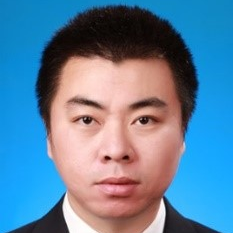Energy Storage, Analysis and Battery Usage
A special issue of Electronics (ISSN 2079-9292). This special issue belongs to the section "Industrial Electronics".
Deadline for manuscript submissions: 15 June 2024 | Viewed by 27043
Special Issue Editors
Interests: electric vehicles; renewable energy technologies; energy management; energy storage; automotive industry; e-mobility; lithium-ion batteries; electrical energy conservation; power system analysis; lithium battery
Interests: energy storage management; battery management systems; energy management in power systems
Special Issues, Collections and Topics in MDPI journals
Interests: battery state estimation; battery balancing; battery aging and life prediction; battery thermal management
Special Issues, Collections and Topics in MDPI journals
Interests: energy storage; electric vehicle; battery management systems; battery safety warning
Special Issues, Collections and Topics in MDPI journals
Special Issue Information
Dear Colleagues,
In recent years, with the rapid development of new energy power generation, such as wind power and photovoltaics, energy storage technology has received much attention from researchers that are attempting to solve the problems around the consumption of these new sources of energy. The safe and reliable operation of energy storage systems involves a series of technologies, from materials to energy management. This Special Issue aims to address the lack of knowledge surrounding these topics. We invite papers to be submitted that discuss energy storage battery materials, management, and system analysis.
For this Special Issue, we are interested in receiving theoretical and practical articles on the latest technologies and applications of energy storage. Topics of interest include, but are not limited to: innovative materials for batteries, advanced battery management algorithms, thermal management of energy storage systems, safety management of batteries in energy storage systems, thermal management of energy storage systems, composite energy storage systems, energy storage systems, power electronic technology in energy storage systems, energy management technology in energy storage systems, etc.
Dr. Jiuyu Du
Prof. Dr. Xiaogang Wu
Dr. Jinlei Sun
Dr. Jianing Xu
Guest Editors
Manuscript Submission Information
Manuscripts should be submitted online at www.mdpi.com by registering and logging in to this website. Once you are registered, click here to go to the submission form. Manuscripts can be submitted until the deadline. All submissions that pass pre-check are peer-reviewed. Accepted papers will be published continuously in the journal (as soon as accepted) and will be listed together on the special issue website. Research articles, review articles as well as short communications are invited. For planned papers, a title and short abstract (about 100 words) can be sent to the Editorial Office for announcement on this website.
Submitted manuscripts should not have been published previously, nor be under consideration for publication elsewhere (except conference proceedings papers). All manuscripts are thoroughly refereed through a single-blind peer-review process. A guide for authors and other relevant information for submission of manuscripts is available on the Instructions for Authors page. Electronics is an international peer-reviewed open access semimonthly journal published by MDPI.
Please visit the Instructions for Authors page before submitting a manuscript. The Article Processing Charge (APC) for publication in this open access journal is 2400 CHF (Swiss Francs). Submitted papers should be well formatted and use good English. Authors may use MDPI's English editing service prior to publication or during author revisions.
Keywords
- battery material
- battery system
- energy storage system analysis
- battery management systems








